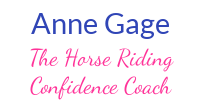Traditional training and natural horsemanship both use particular language that affects not only our horses, but us, as well.
Using Aids or Cues
For example, traditional training uses the word “aid” or “cue” to mean an action the rider takes that tells the horse to do something.
For example, using a light squeeze from the rider’s leg as an aid or cue that tells the horse to move his hip over.
The words “aid” and “cue” evoke a feeling of gentleness. They seem harmless.
But, how is that aid/cue trained?
Typically by applying the light aid/cue and then using a stronger one - such as a kick, adding a spur, or using a whip - until the horse does what the rider is expecting from him.
It’s the removal of that escalating pressure (the aversive stimulus) that “rewards” the horse’s behaviour.
The horse eventually responds to the lighter aid because it wants to avoid the stronger one.
Playing Games
In natural horsemanship, the word “game” is often used. It’s based on the idea that horses naturally act aversively (i.e. pin their ears, kick, bite and push each other around) towards each other, and have a dominant/submissive social order.
While horses do sometimes act aversively towards each other, it’s not the norm. They spend much more time resting, grazing, grooming and playing together.
The language of playing games gives the idea that you’re interacting with horses in the way they naturally interact with each other.
And that you’re all simply having fun.
But, just as with the way aids/cues are taught in traditional training, the games are based on using aversive stimuli or negative reinforcement.
The trainer swings a rope at the horse’s hindquarters – gently, at first, then with increasing velocity and eventually “tagging” (hitting) the horse with the end of the rope until the horse moves his hips away.
Pressure and Release or Escalating Pressure
Both traditional and natural horsemanship use "pressure and release" tactics.
The pressure escalates until the horse does what the trainer is asking for and then the pressure is removed.
The horse is working to make the unpleasantness go away.
What’s wrong with a little slap and tickle (words commonly used to describe how to hit a horse with a whip or rope)?
It’s all just fun and games, right?
Not necessarily, if you’re on the receiving end.
Playing Games
Like my young niece was the other night from her older brother.
He was having lots of fun hitting her with the Thor hammer (it’s foam, thank goodness) and then putting her in a head lock.
She was screaming and crying for him to stop.
When their parents intervened, my nephew’s response was “but I was just playing!” In his mind, that made it okay.
Language re-frames what we’re doing.
My nephew was “just playing” with his sister. So, even if it was painful or uncomfortable for her, it was okay in his mind.
If popping your horse with a rope or tickling him with a whip or waking him up with a spur is part of the game – even though it’s causing pain or discomfort to the horse – how can it be wrong?
The language of “aiding” or “playing a game” lets us off the hook of causing pain to our horses.
Because you love your horse and never want to cause him pain.
But, since you're helping him to learn or you're just playing, what you're doing is okay.
Obviously, this type of training works. That’s why people continue to use it.
And, because the horse responds and gives us what we’re asking for, our behaviour is positively reinforced.
Do You Want Compliance or Connection?
Do you want more than blind obedience and compliance from your horse?
If what you want is a deeper connection, complete trust and true partnership, there is another way to train.
Training with positive reinforcement, builds your horse’s confidence, his trust in you, and his resilience.
When things go wrong, as they occasionally will, your horse will be better equipped to deal with it and bounce back much more quickly.
The next time you see a trainer demonstrating a particular technique with a horse, ask this question ... “What effect is that having on the horse?”


